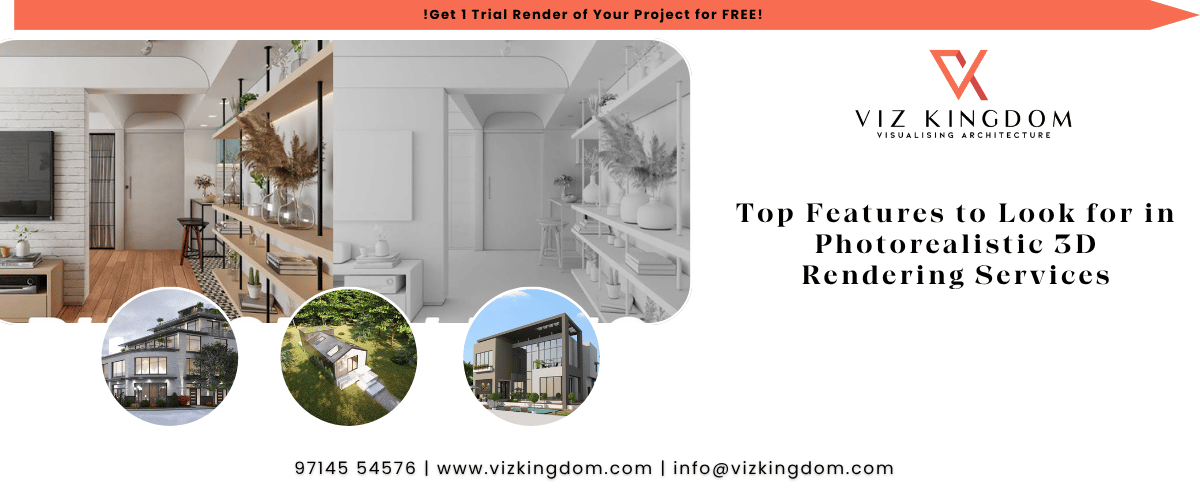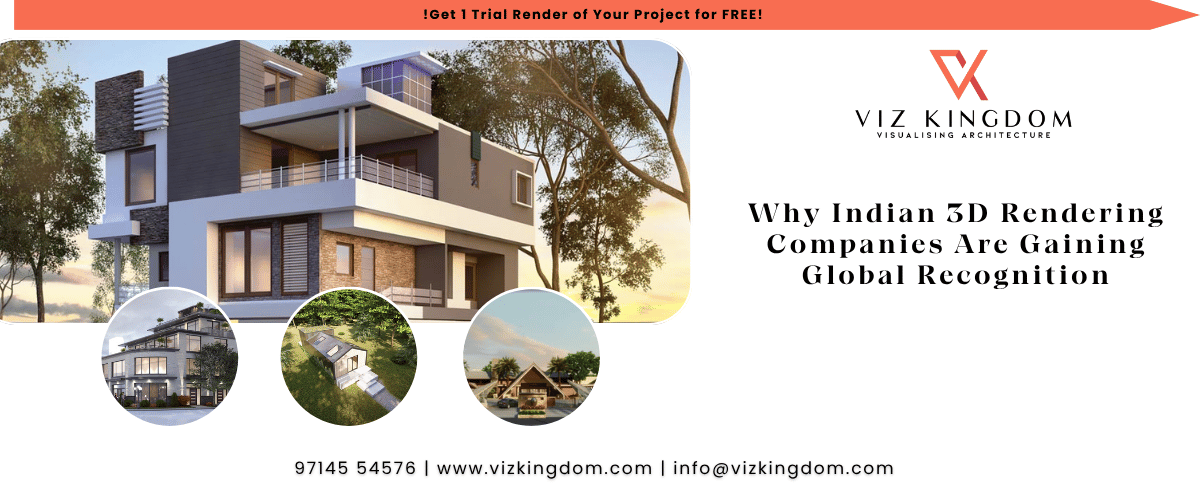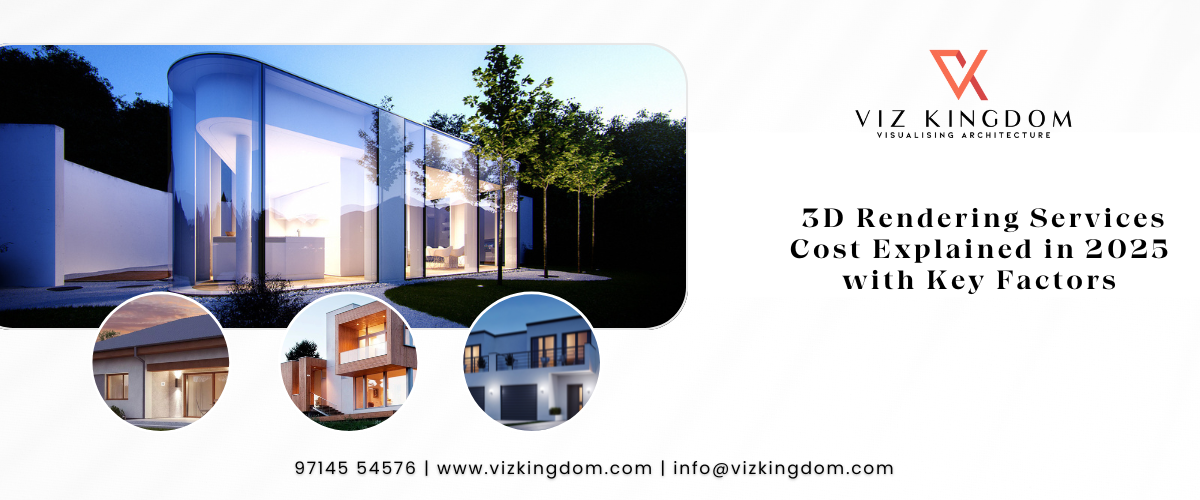
Top Features to Look for in Photorealistic 3D Rendering Services
In the modern design industry, the use of photorealistic 3D rendering has become the most common way of visual communication. From architecture and real estate to interior design and product visualization, renders bridge the gap between imagination and presentation.
Renders allow clients to see and feel the projects even before construction starts. This includes the use of materials, lighting, and textures that are very similar to real-world ones. However, since there are a lot of studios and freelancers out there that render, how do you choose the right partner?
To help in your decision-making process, we are giving a detailed overview of the essential traits that characterize quality photorealistic 3D rendering services.
1. Technical Expertise and Software Proficiency
The foundation of professional photorealistic 3D rendering lies in the company’s command over industry-grade tools. The best rendering studios depend on powerful software, such as V-Ray, Corona Renderer, 3D Max, Blender, and Unreal Engine, for the purpose of getting a perfect simulation of material reflection, global illumination, and light behavior.
A team with technical skills knows how to make the scenes look realistic and, at the same time, keep the file size low. They can balance the number of polygons, do proper UV mapping, and manage complex shapes very well. Inquire of the studio about the software they use and if they can provide both stills and scenes that are ready for animation.
2. Realistic Lighting and Shadow Detailing
The stimulation of real lighting for both artificial and natural light sources adds realism, mood, and depth to the visuals. High Dynamic Range Imaging (HDRI) is utilized by the best 3D rendering service provider to depict the sky and light falloff accurately, including reflections and refractions.
A professional renderer is aware of color temperature, time of day, and how light affects materials like glass, fabric, or metal. Shadows are soft, bloom is realistic, and light leaks are subtle—all these elements contribute to the scene’s credibility.
Look for:
- Exposure and tone mapping that are balanced
- A realistic balance between daylight and interior lighting
- Volumetric effects such as haze, fog, or atmospheric depth
3. Precision in Material and Texture Mapping
The interaction of materials with light is what gives birth to true photorealism. The top photorealistic 3d rendering studios apply Physically Based Rendering (PBR) materials that simulate the physical properties of textures. It includes roughness, reflectivity, bump, and displacement that achieve the required realism in the final output.
A quality rendering is characterized by the presence of depth and imperfections in every surface: slightly uneven reflections on marble, fingerprints on metal, and subtle scratches on wood. These micro-details are what set apart high-end photorealistic 3D rendering from basic visualization.
What to verify:
- Use of high-resolution textures (4K and up)
- UV mapping made uniformly
- Materials resized just as (tiles, wood grains, etc.)
4. Camera Composition and Perspective Accuracy
Rendering is visual storytelling, and composition is important, like in photography. A professional renderer selects the viewpoints from which to look at the whole design, like wide-angle shots for exteriors and eye-level frames for interiors.
High-quality photorealistic 3D rendering services recreate the lens effects of real life, such as simulated depth of field and focal blur, where naturally the viewer’s attention is directed. Proper perspective, vanishing points, and framing form an experience that is visually balanced and immersive.
Pro tip: For interiors to simulate human eye level and provide a realistic viewing experience, the camera should be positioned at 150 cm-170 cm.
5. Attention to Scale and Proportion
The most meticulous rendering can still appear unrealistic if the proportions of the objects are incorrect. Skilled artists always keep the actual sizes of the different objects, such as doors, chairs, lamps, or plants etc. This consistency ensures the render aligns with the architectural plan and offers the clients a true feeling of the space.
Inquire with your rendering service provider how they bring in CAD or BIM models to ensure the accuracy of measurements.
6. Atmospheric and Environmental Realism
The environmental aspects, like the tone of the sky, the weather, fog, and reflections, are very influential in showing the realism of the images. The most excellent services customize the mood according to the context of the project—golden hours for villas, overcast tones for urban architecture, or moody interiors for high-end spaces.
Accurate atmospheric rendering also facilitates the visualization of energy performance, daylight penetration, and shadow analysis for the architectural presentations.
Tip: Search for the most natural-looking renders, which have depth cues. For example, minor haze in the background or gradual color fading with distance are the very subtle touches, but they still make a huge difference in the realism.
7. Post-Production and Image Enhancement
Post-processing is a key step when it comes to making a good and appealing picture out of a technically sound render. The best renderings of the top studios are done only in the case where they use Adobe Photoshop, Luminar, or custom AI development tools to adjust in moderation the contrast, saturation, tone, and sharpness.
Subtle lens effects (bloom, glare, or vignette) can add photographic depth without overdoing it. Editing can easily go wrong and turn a natural-looking picture into an artificial one. So, proper and accurate editing is the way to go.
Professional services offer:
- Natural color grading
- Clean background compositing
- Print and digital output that is high-resolution
8. Output Flexibility and File Formats
In case you demand still images with super ultra-high resolution, animations, or 360° virtual tours, the rendering partner needs to give you various options for the output. Being compatible with file formats such as JPEG, TIFF, EXR, or video formats (MP4, MOV) will mean that the rendered images can be used without any problems or limitations in the different areas of marketing, presentations, and print media.
Final Thoughts
Photorealistic rendering is about the precision, the emotion, and the credibility. The proper studio blends the artist’s creativity with the technician’s mastery to make the designs that the clients can trust and feel at home with.
At Viz Kingdom, we make visuals that are so real they cannot be distinguished from the actual design. Our group of highly qualified rendering artists and architects provides the service of photorealistic 3D rendering that reflects your vision in the most authentic way. With us, every light, texture, and atmosphere has been improved to perfection.






